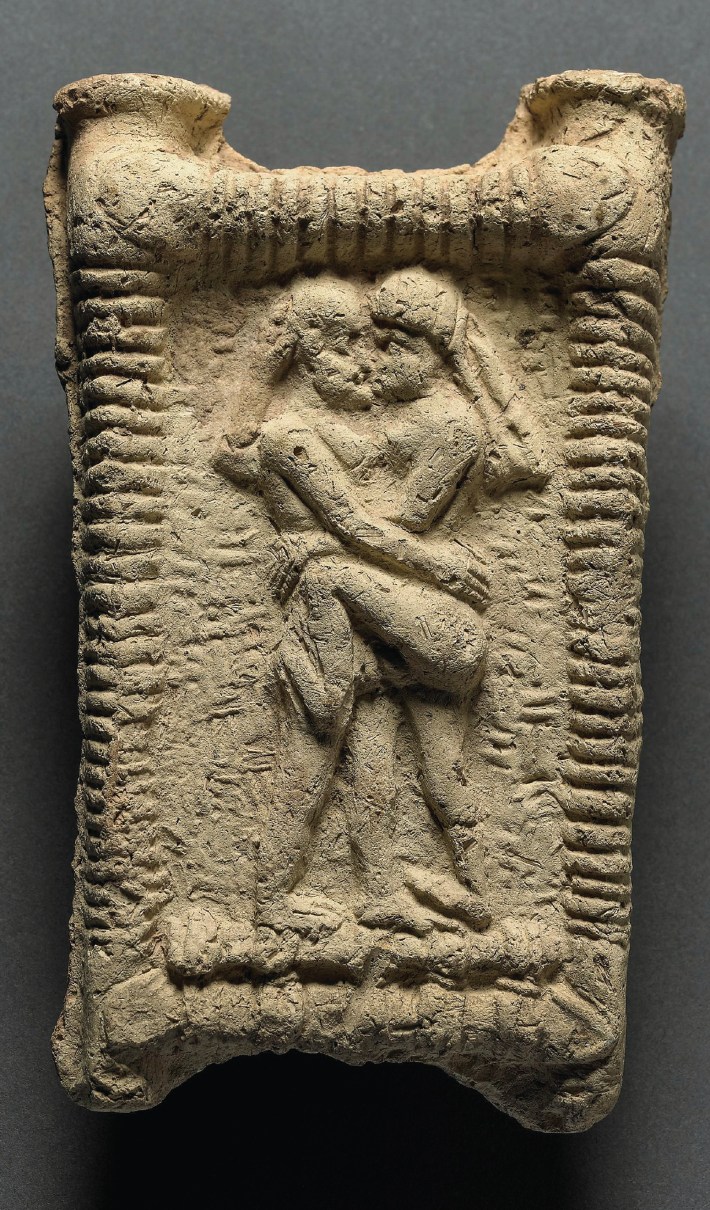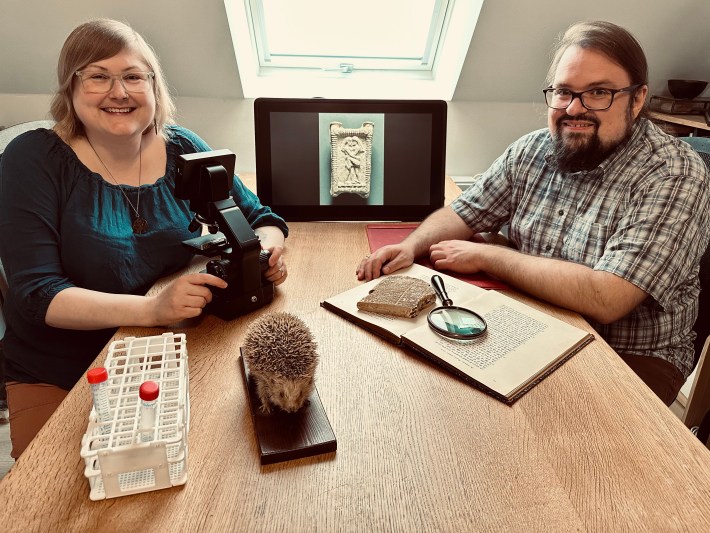The HSV-1 virus, which causes facial herpes, is spread through cold sores or saliva, such as when two people share a drink or angle their parted lips toward each other until they make contact, a phenomenon that can be both lovely, horrifying, or a bit of both. Herpes is quite common; an estimated 3.7 billion people have it, according to the World Health Organization, and it is usually dormant. But scientists know little about the origins of the virus and how HSV-1 overtook all the other ancient herpes lineages to become the virus that we still live with today.
Last July, a team of scientists from the University of Cambridge published a paper in the journal Science Advances investigating when the modern strain of HSV-1 first spread across the world. The researchers sequenced four herpes genomes from ancient skeletons of people in Russia, the United Kingdom, and the Netherlands who had died anywhere from the third to 17th centuries. They found that the modern herpes renaissance began about 5,000 years ago in the Bronze Age, an era that also recorded the earliest known written record of romantic kissing in a manuscript from South Asia dated to 1500 BCE.
A coincidence? Not so, said the researchers! Surely, they suggested, all this newfangled lip-locking would have contributed to the spread of facial herpes—loved ones kissing loved ones, strangers kissing strangers, the whole world coming together in a great big smooch. In the first century, the Roman Emperor Tiberius attempted to ban kissing at functions to stop the spread of some disease, which might have been herpes.
But now, a duo of different researchers—Troels Pank Arbøll, an expert on the history of medicine in Mesopotamia at the University of Copenhagen, and Sophie Lund Rasmussen, a wildlife ecologist in the Wildlife Conservation Research Unit at the University of Oxford—have pushed back against this kissing timeline in an article published today in the journal Science. Citing a rather erotic slab of stone, Arbøll and Rasmussen argue that romantic-sexual kissing was documented much earlier, in at least 2500 BCE in ancient Mesopotamia or modern-day Iraq and Syria. Therefore, the duo argued, kissing was likely not a significant trigger behind the spread of pathogens such as HSV-1.

"I welcome new data that helps us understand how ancient pathogens spread during human history," Charlotte Houldcroft, a virologist at the University of Cambridge and an author on the Science Advances paper, wrote in an email. Houldcroft added that there is variation in the occurrence of romantic-sexual kissing around the world today, which she expects to be true of the past. "I hope that in [the] future we will have ancient virus data from Mesopotamia, so that historical, archaeological and genetic data can be combined," Houldcroft said.
Rasmussen, the wildlife ecologist, actually specializes in hedgehogs, and recently published a paper documenting the life and death of Thorvald, the oldest scientifically documented European hedgehog—research that might seem unrelated to the matter at hand, which is kissing. But Rasmussen is married to Arbøll, who studies diseases in ancient Mesopotamia, many of which were spread through kissing. The two ended up chatting about the Science Advances story at dinner.
"When we discussed it, Troels said that he was pretty certain that the Mesopotamian written sources about kissing was remarkably older," Rasmussen wrote in an email. "So after dinner, we went and double checked this." Arbøll and Rasmussen were correct: The earliest documentation of a romantic-sexual kiss was a thousand years before the South Asian manuscript. The two decided they wanted to share this knowledge of this early, sexy kiss with the public.

The evidence Arbøll and Rasmussen included in their new article is a clay model depicting two nude people kissing and copulating on a bed, dated to 1800 BCE from ancient Iraq, or Mesopotamia. And this is not even the oldest evidence of kissing in Mesopotamia, Rasmussen said, citing earlier written cuneiform sources. But they also dove into the wide-ranging research strategies and forms of evidence one can employ in the investigation of early romantic-sexual kisses.
How does one even begin investigating the global emergence of sexy kisses? Platonic kisses shared between family appear to be ubiquitous in people in all cultures, places, and times. Romantic-sexual kisses, on the other hand, often accompany copulation, love, or both. But a 2015 report in the journal American Anthropologist found that romantic-sexual kisses are not universal, and occur more frequently in more socially complex cultures. Of course ancient art, text, and languages can record the act of romantic-sexual kissing, but what about the possibility of prehistoric sexy kisses? Sexy kissing does not fossilize nor preserve in burials, and even if it did, some historian might find a way to dismiss it as merely a brotherly kiss, a kiss between brothers, brothers who kiss.
The animal kingdom can offer some insight, as we are far from the only primate that engages in lip-kissing. The famously amorous apes called bonobos are known for "intense tongue-kissing" and chimpanzees use platonic kissing to manage social relationships, Arbøll and Rasmussen said, adding that these behaviors could offer insight into the evolution of kissing in humans. Ancient DNA, extracted from people who died hundreds to thousands of years ago, can be one route in. In 2017, an analysis of Neanderthal dental plaque published in Nature detected a near-complete genome sequence of a strain of Methanobrevibacter oralis, a microbe that lives in human mouths, begging the question: Were humans and Neanderthals sharing sexy kisses in caves? Of course, the presence of these microbes is not a smoking gun. "Studying kiss-transmissible microbes through ancient DNA does not reveal whether the transmission happened through friendly-parental kissing or sexual-romantic kissing," Rasmussen said. For example, these microbes could also be passed while sharing food.
All of this suggests, of course, that the earliest recorded sexy kiss was almost certainly not the first sexy kiss, but one in a long lineage that has persisted into modern society. Perhaps this is the beauty of an ancient kiss—destined never to be carved into tablets, inscribed in cuneiform, or accidentally recorded in a TikTok—meant only for the humans (and, perhaps, Neanderthals) engaged in the act. As more Mesopotamian tablets are discovered and studied, perhaps more sexy kisses will be revealed. But remember that each time you enjoy yourself a sexy little kiss with another hominin, you are keeping one of our great human traditions alive. So kiss away, and remember that you probably already have herpes, and that's OK.






